
The unique works of the early Renaissance are presented in the Louvre with amazing fullness. The director of the Museum of Napoleon assembled this priceless collection, the so-called Louvre, Baron Vivant-Denon. After the fall of Napoleon, the commission, designed to return the Tuscan paintings to Italy, did not claim them.
One of the gems of this collection was the altar image from the Church of San Francesco in Pisa with the image of Our Lady on the throne with the Child surrounded by angels. This altar door dates back to the end of the 13th century. The painting that entered the Louvre in 1814 is very large – the largest in the painting section of the early Renaissance. It most clearly reflects the transition from the Byzantine style that prevailed at that time to the particular fluidity of the lines, which would become an integral part of Tuscan art.
The famous art historian Giorgio Vasari considered it the work of the Tuscan artist Cimabue, although the second altar casement, now located in Florence, is attributed to Duccio, Cimabue’s Sienna counterpart, and is considered later.
This altar opens in the picturesque art that new kind of works, which bears the imprint of their creators. The memory of such a person as Cimabue was alive and three centuries later, when Vasari wrote a chronicle of the Renaissance called “The life-descriptions of the most famous painters, sculptors and architects.” According to Vasari, Cimabue was very stubborn, for which he received the nickname “Bull Head”. In his images there is always a special tension, palpable in the open, looking directly at us views.
 Notre Dame avec le bébé sur le trône, entourée d’anges – Chenny Di Pepo
Notre Dame avec le bébé sur le trône, entourée d’anges – Chenny Di Pepo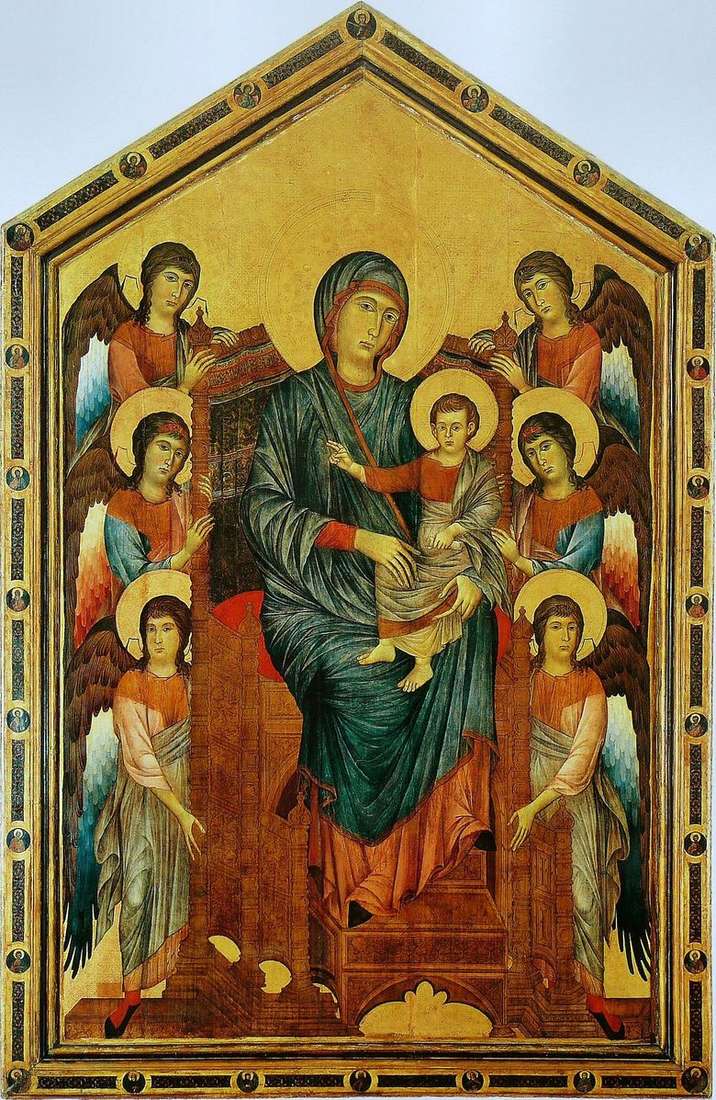 Virgen y el niño en un trono rodeado de ángeles – Chenny Di Pepo
Virgen y el niño en un trono rodeado de ángeles – Chenny Di Pepo Madonna and Child, surrounded by angels, with Saints Frediano and Augustine by Filippo Lippi
Madonna and Child, surrounded by angels, with Saints Frediano and Augustine by Filippo Lippi Madonna and Child, surrounded by angels, of sv. Roses and St. Catherine by Pietro Perugino
Madonna and Child, surrounded by angels, of sv. Roses and St. Catherine by Pietro Perugino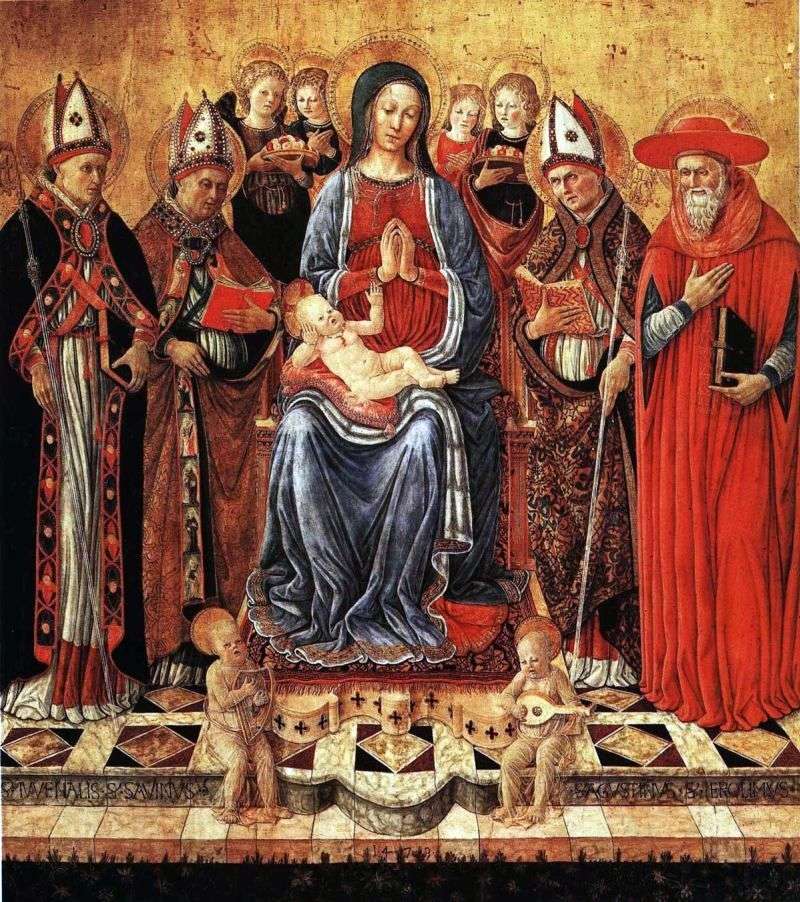 Maria and the baby on the throne, surrounded by the saints Juvenal, Sabina, Augustine, Jerome and six angels by Giovanni Boccati
Maria and the baby on the throne, surrounded by the saints Juvenal, Sabina, Augustine, Jerome and six angels by Giovanni Boccati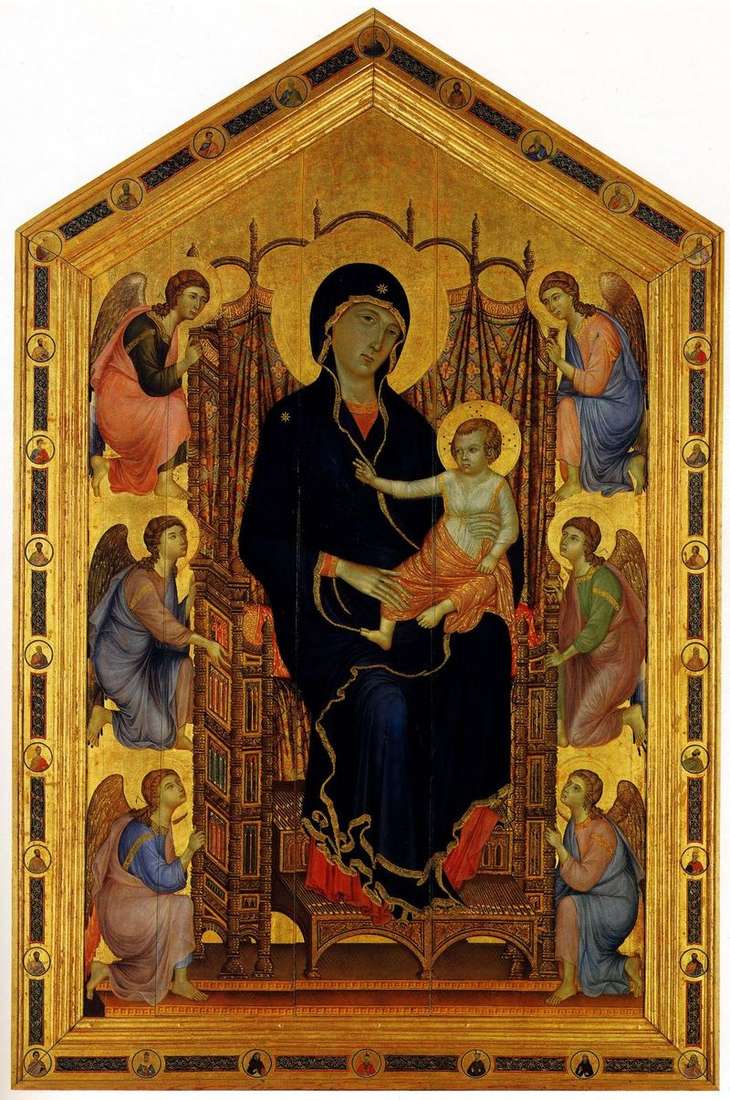 Madonna and the angels by Cimabue
Madonna and the angels by Cimabue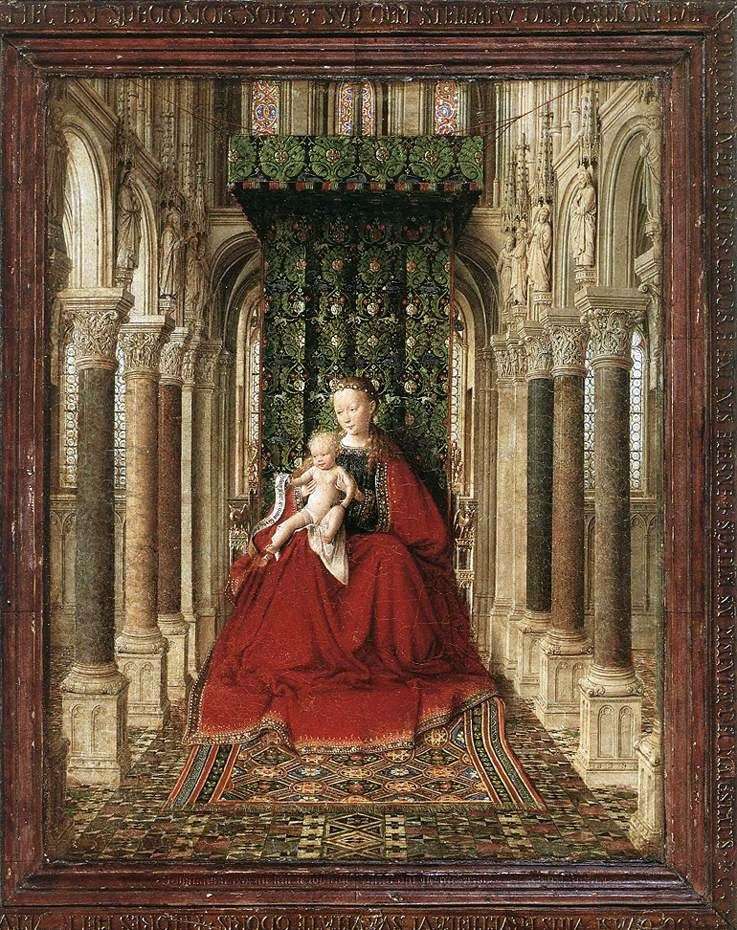 The Virgin with the Child on the throne in the temple by Jan van Eyck
The Virgin with the Child on the throne in the temple by Jan van Eyck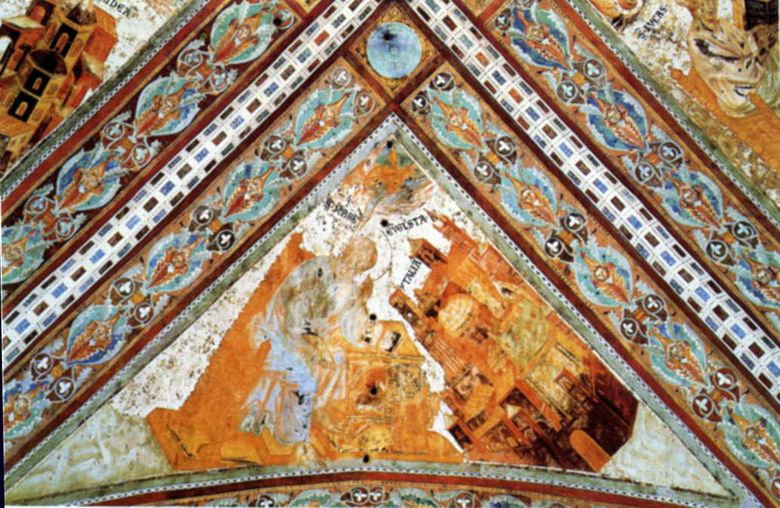 Saint Marc l’évangéliste – Giovanni Cimabue (Chenny di Pepo)
Saint Marc l’évangéliste – Giovanni Cimabue (Chenny di Pepo)